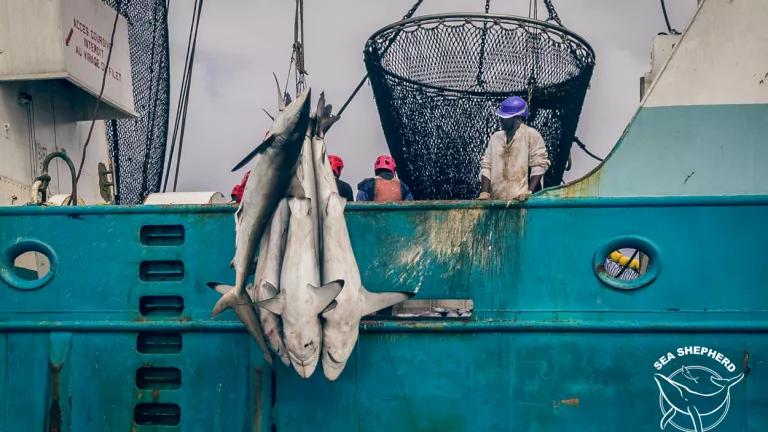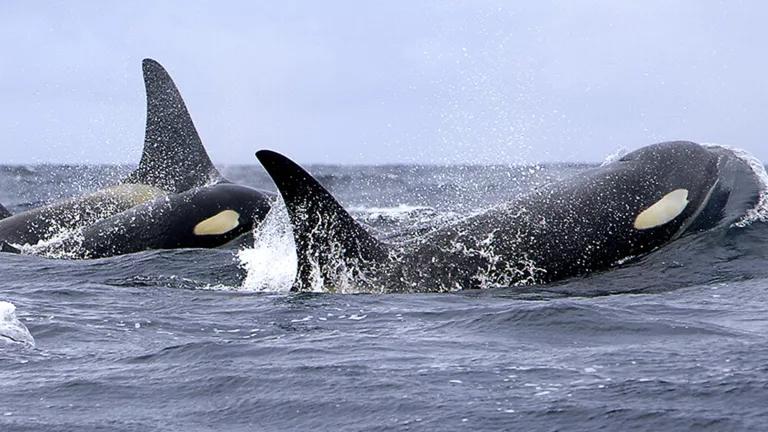
Noise is increasingly recognized as one of the most pervasive and significant impacts to our oceans. New noises from shipping, seismic surveying for oil and gas, sonar, and a range of construction activities, are drowning out background sounds and, in some cases, causing physical harm to whales and other marine life that rely almost entirely on sound to survive.
The more scientists learn about the effects of ocean noise on marine mammals, the more we realize that the impacts may be more serious than we thought. Increased stress due to noise exposure can reduce the health of exposed whales—just the same way that we are more likely to get sick when we are stressed out. This may reduce breeding success and also impair their ability to cope with many other modern-day stressors.
These new findings raise many questions about how exactly noise impacts individual marine mammals, and what affect those impacts have on the long-term survival of populations and species. This is a complex problem and marine mammal scientists are starting to work together to try and figure it out. Last month, a group of marine mammal experts (myself included) convened for three days in a windowless room in Seattle to do just that. Our subject? The highly endangered Cook Inlet beluga whale.
The population of beluga whales that lives only in Cook Inlet, Alaska, has declined precipitously in the last 30 years, from approximately 1,300 whales in 1979 to 367 in 1999. The population has not rebounded despite increased protections and only about 340 individuals survive today. The National Marine Fisheries Service recently listed Cook Inlet beluga whale as one of eight species and populations most at risk of extinction in the near future.
It is likely that a multitude of noise-related stressors are contributing towards the Cook Inlet beluga’s lack of recovery. Cook Inlet is one of the most populated and highly industrialized regions in Alaska. Belugas face a huge number of noise-related stressors, including from the oil and gas industry, port construction, shipping, coastal development, military activities, and fisheries. These activities potentially disrupt all aspects of their feeding, breeding, and social behaviors. A recent assessment concluded that beluga communication and hearing is negatively impacted in most locations of Cook Inlet most of the time.
So where did we—a mixed bag of sound experts, beluga biologists, physiologists, and geospatial analysts (aka me)—begin once we were all together? We focused on estimating how noise exposure would reduce feeding opportunities for a female beluga whale by drowning out the echolocation sounds they use to feed. We then estimated how that reduced feeding opportunity might reduce her success in raising a calf that year. Our advice will be used to build a model to predict how noise may affect population growth and decline in the future.
Over the next few months I will be supporting this work by creating a monthly map of Cook Inlet beluga whale distribution (check back for updates!). These maps will be used to better understand where and when Cook Inlet belugas are likely to overlap with noise, helping us to determine the number of beluga whales affected and also the levels of stress a single individual may experience throughout the year. Managers can then use this information to make sure noise levels are reduced in particularly important habitats.
Noise has finally been recognized as one of the most harmful impacts to marine life, but the hard work of understanding the true extent of its effects, and how we can manage them, has just begun.




